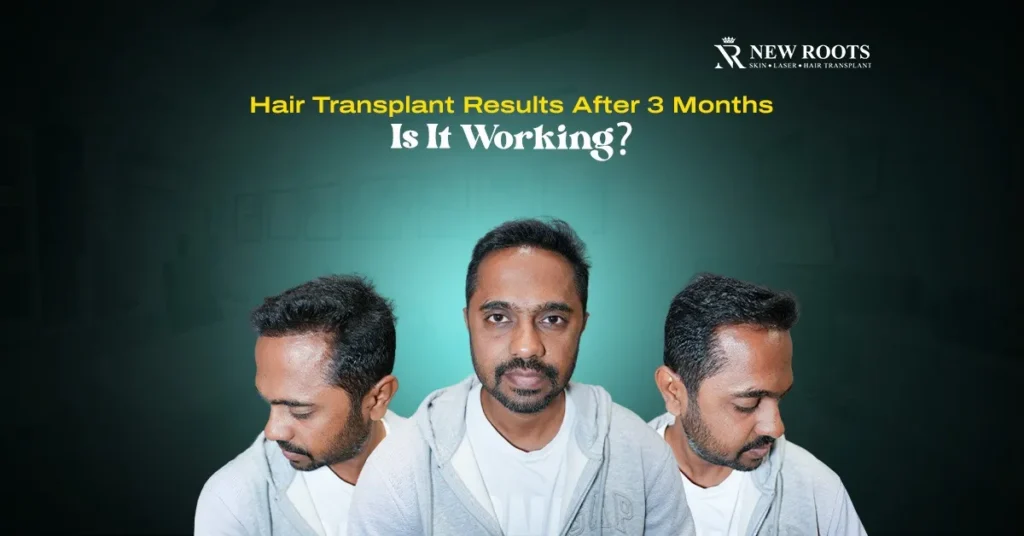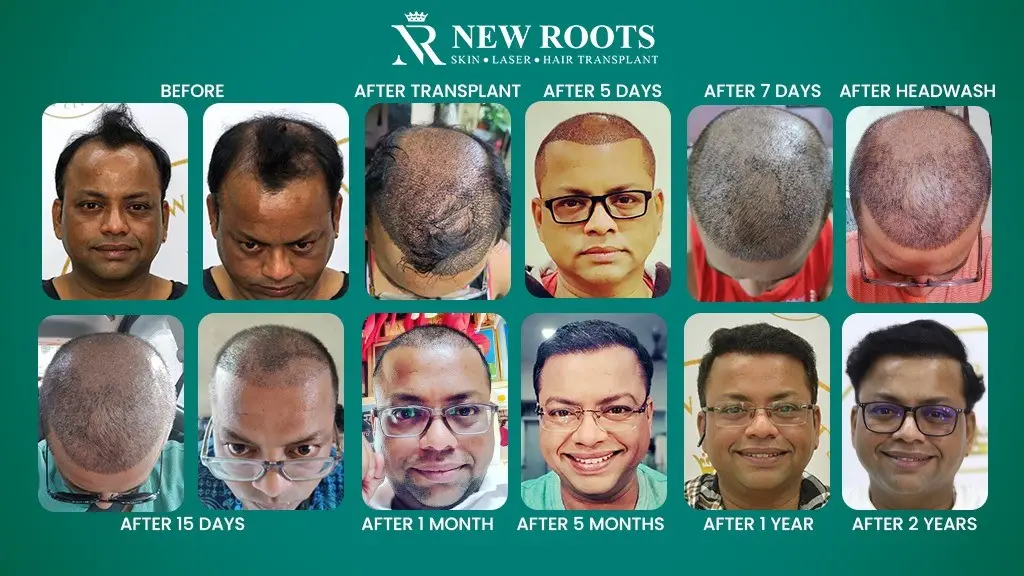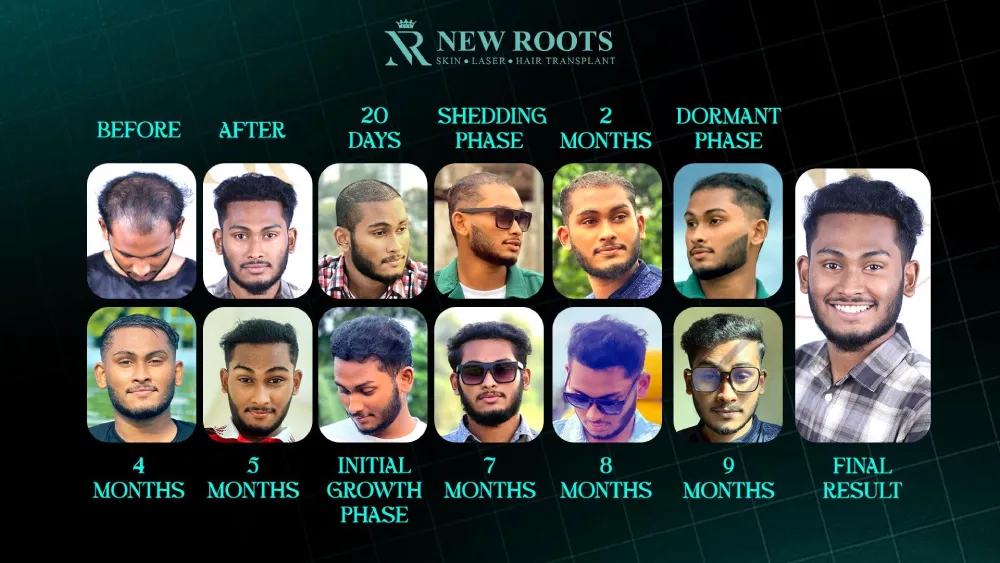Lately, hair transplant surgical procedures have grown to be popular due to the fact that many people need new hairstyles, as well as have their hair restored.
It will be equally helpful for the patient to know what he should expect Hair Transplant Results After 3 Months, which will help him or her understand the entire process of hair restoration better.
This is the time patients begin to feel the beginning of the hair growth process and skin healing. Most patients prefer to avoid vigorous physical activity during this period.
Introduction of Hair Transplant Results After 3 Months
After surgery, people are concerned about the success of their hair transplant. Within the first few weeks can shed off and new hairs replace them, although this might take some time before they grow to their normal state.
This way, people can move beyond situations that are otherwise immediately apparent after Hair Transplant Results After 3 Months
In the New Roots clinic, people are helped to receive professional knowledge about the process of regaining and development in the following months. Such professional support has a crucial role in patient patience, which is crucial for hair restoration.
Table of Contents
Hair Transplant Growth Timeline
It is therefore important for patients who go for hair transplant surgeries to expand the growth timelines of the processes.
The following timeline captures how the hair grows and the scalp’s conditions expect changes to have taken place, giving expectations after a transplant.
Initial Phase: First Few Days After The Transplant
After the surgery of a hair transplant, the patient is likely to have certain reactions—early signs, for example, redness and swelling, or mild pain in both donor and recipient areas in the first several days or weeks.
This is the time when the scalp starts to restore; newly implanted follicles are undergoing some kind of stabilization in this localized area.
Day 1-7: After one week, there may appear red scabs on the spots where hair follicles were transplanted, and the skin can be irritable.
Foot care is recommended by a clinician to minimize activities that require robust foot usage, and aftercare recommendations are made for healing purposes.
Week 1 to Month 1: Shedding Phase
Most patients end the first week in the shedding phase, where hair that existed may start to shed. They are normal occurrences and can be somewhat disconcerting to some, which is common, especially during the process.
Weeks 2-4: This is normal because transplanted hair shafts are teleologically in a state where most of them are not in the anagen phases anymore.
Hair in this transition period may well grow only two inches or may go into the telogen phase, or resting period.
They may be worried at this stage; however, the follicles are still healthy and will start healing rather soon.
Months 1 to 3: Dormant Phase
There is usually slow, visible growth during the first three months of business operation.
Month 1: Hair loss persists, and this is what makes people feel that they are losing their hair more and more. The skin of the scalp needs a few weeks to heal, and patients are advised to be patient during this stage of transition.
Month 2: The hair follicles are resting, and while some may begin to wake from their induced hibernation, there is little new appearance of hair. However, aftercare of those hair follicles is very important for them to remain healthy.
Month 3: After the third month, each patient can see thin, thin hairs growing from the recipient site. These hairs may appear thin and lighter than existing hair, but they are just starting to grow.
Months 4 to 6: Initial Growth Phase
This period is a common one for the variation in hair appearance to happen.
Months 4-6: These hairs become more apparent with time as they bulk in size and tensile strength. The degree of coverage of the recipient area by the patient’s hair increases in most cases. The growth may still look rather uneven at this stage, and that is why patience must be kept.
Month 6 and Beyond: Maturation Phase
6 Months: This is experienced as the full impacts of the transplant start appearing, something that has been seen in EB.
The new hair that grows from the root feels soft and begins to gain texture and color, and fall into place with the preexisting hair.
This method has the potential to make excellent changes that can be seen concerning hair density in patients.
12 Months: The final manifestation of any hair transplant is observed one year after the procedure is performed. The hair should also be able to be fuller and healthier, and could be styled as that of a natural hair type.
This part gives more insight into how to approach the hair transplant growth timeline in the right manner to enable the affected individual to handle the required recovery process correctly.
Of course, every person is unique, and the results of the procedure may vary, but understanding the processes that are happening and the natural phases of human hair growth can help people maintain a positive outlook and expectations towards their hair transplant procedures.
Hair Growth Progress and Recovery Timeline
What to Expect During the Recovery Timeline
Recovery scales depend on the individual’s health, after-surgery care, and recommendations provided by the clinic. After three months, the following milestones may be observed:
- Increased Hair Density: Only when the hair follicles are nourished and the blood supply integrates should hair density begin to rise.
- Continued Hair Shedding: This is the reason why, after the session, hair shedding persists as some of the transplanted hair is still in the telogen shedding phase, which lasts three days up to three months before new hair strands come in.
- Healing Process: Scalp health is, therefore, crucial for the new hair to grow after a hair transplant. New Roots clinic doctor checkups may help identify the issues during this phase.
Donor and Recipient Areas
A satisfactory hair transplant outcome at 3 months depends on an understanding of the donor and recipient areas.
Donor Area
The donor area should ideally be healing well and should be evident with new hair growth within a week of the treatment.
The hair, which may have been thinned during the extraction process, can be effectively restored through proper care that also helps in improving the rate of healing.
Recipient Area
Concerning the recipient area, patients may find different hair growth patterns. Old hair and there is going to be new hair, and when it grows initially, they are not going to be powerful and may look even like peach down.
What has to be considered is the fact that it will take some time for these new strands to grow healthy and meld with the existing hair.
Table of Expected Hair Progress
| Month | Status of Donor Area | Status of Recipient Area |
| 1 Month | Healing, minimal new growth | The shedding phase begins |
| 2 Months | New growth, replenishing thickness | Early signs of new growth |
| 3 Months | Significant recovery | Patchy growth, more visible results |
Effective Aftercare Instructions
To have good hair transplant results, it is mandatory to have proper treatment of yourself after the Hair Transplant Results After 3 Months. Key aspects include:
Medication Usage: The two drugs that can help to regrow hair include finasteride and minoxidil. The use of these medications as prescribed can encourage folks to have better and thicker hair.
Scalp Care: Scratching of the scalp should be discouraged, as the scalp should always be clean. Some of the procedures suggested by the clinic for doing away with cocaine soften the hair without leading to the unhealthy harming of the scalp.
Sun Protection: Sunlight exposure increases the risks, and decreased exposure to the sun also helps in the healing process of your scalp. Earlie, you said to use a hat or sunscreen, and I followed the instructions.
When patients adhere to these aftercare instructions, they would improve the general progress of their transplant considerably.
Pain Management and Hair Shedding
The other Kaiser recommendations are to be compared with Kaiser’s recommendations for pain management and hair shedding.
As such, it is important to appreciate the fact that pain control and, thus, the extent of and perhaps even the episodes postoperatively, may differ considerably across patients.
Some mild pain is usual for several weeks after the treatment, but can be relieved by painkillers as advised at the pharmacy.
The shedding phase is likely on average 2-3 weeks after surgery; this is when, occasionally, some of the transplanted hair may fall out.
It is imperative not to get overly worried, because this shedding process is normal and does not mean that the person has lost the transplanted follicles.
Understanding the Hair Growth Cycle
The character of the hair growth cycle is nicely understood, and several levels outline how hair behaves after it has been transplanted. The main levels are:
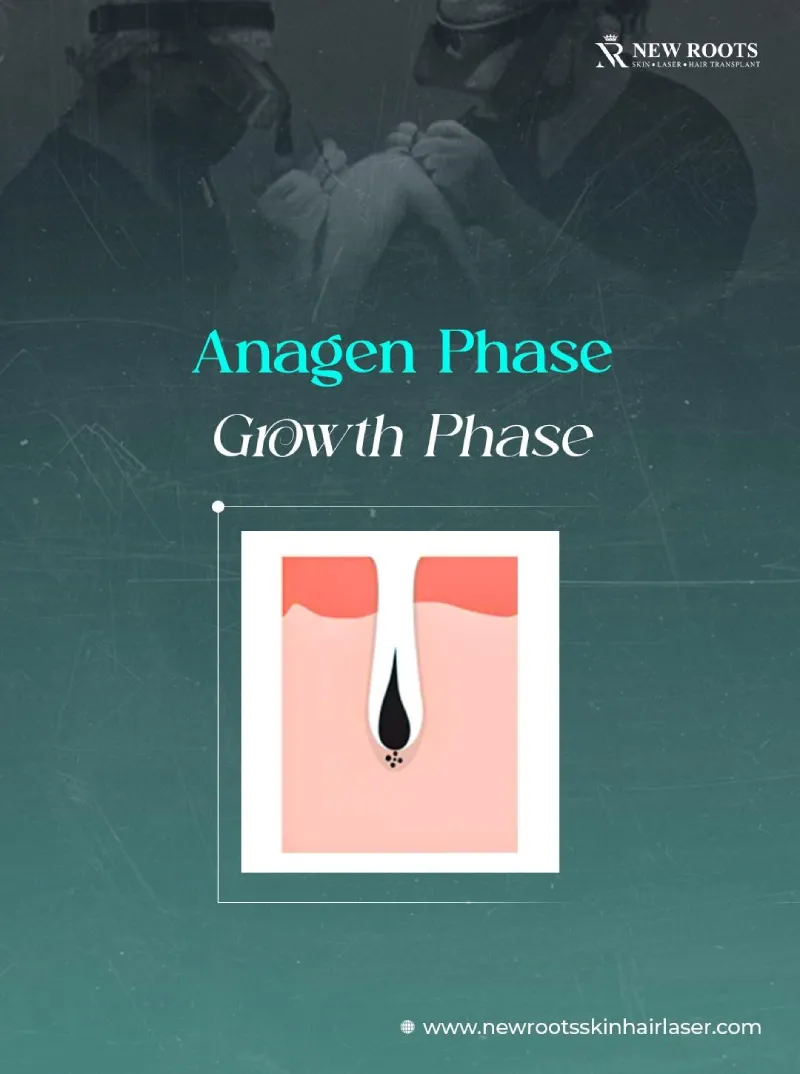
Anagen
This phase can final for a few years, and it's miles in this phase that hair growth is stated.
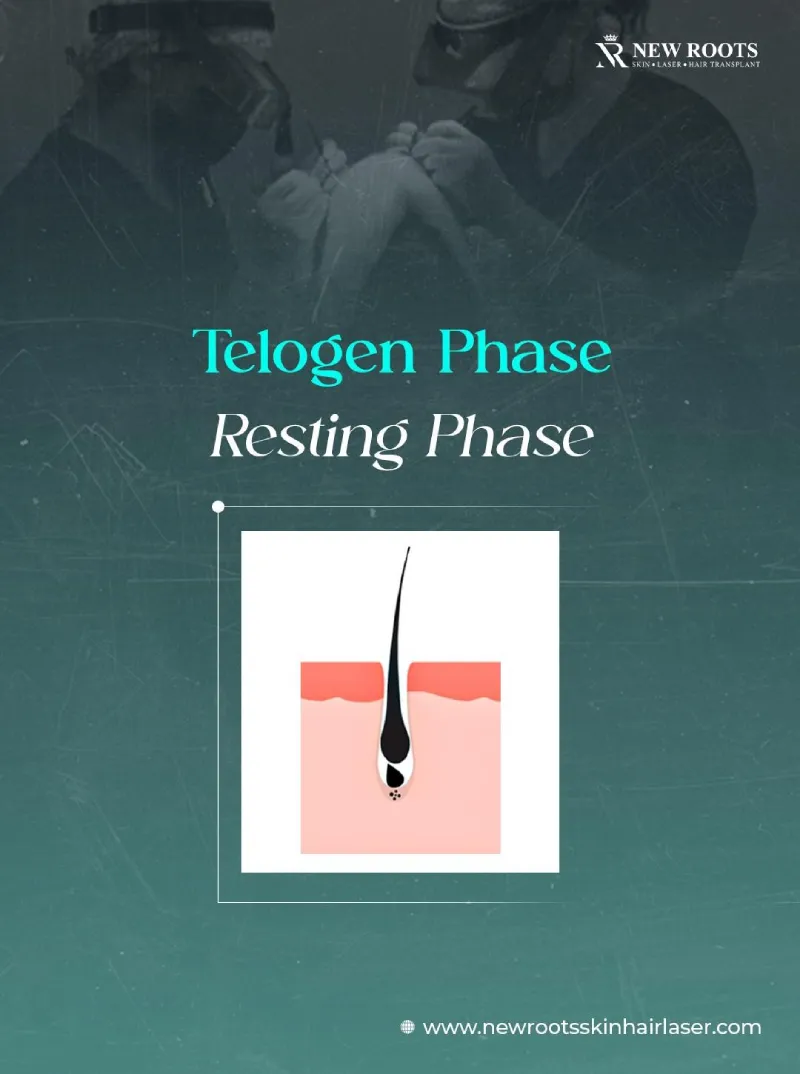
Telogen
This segment accounts for 10-15% of hairs on the pinnacle at any individual time. It might be viable that transplanted hair may also go through the above-stated phase for a while.
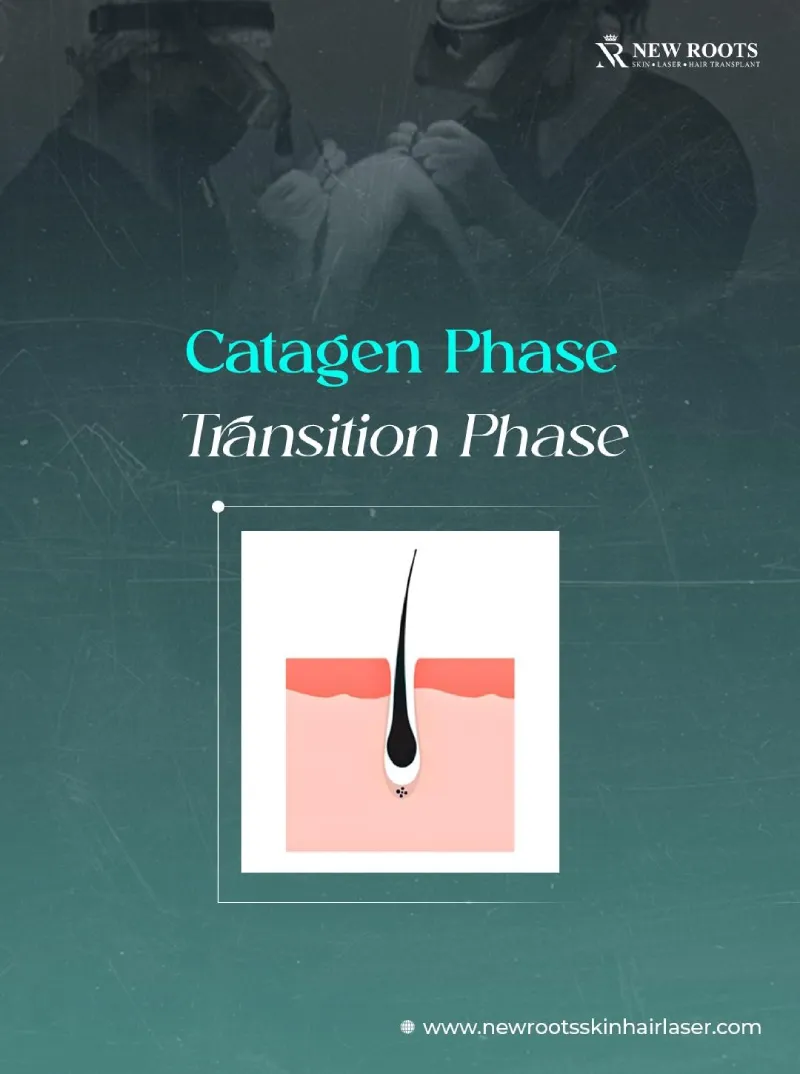
Catagen
The catagen phase is the short transitional stage in the hair growth cycle, lasting about 2–3 weeks. During this phase, hair stops growing, detaches from the blood supply, and prepares to shed. It’s a crucial part of the cycle before entering the resting (telogen) phase for healthy hair renewal.
Factors Influencing Results
Several factors can affect the success and timing of Hair Transplant Results After 3 Months:
Individual Variability: Every individual is unique, and as such, different people will experience different hair growth and health, which affects the healing process.
Lifestyle Choices: Both directions—quitting smoking and following a healthy, balanced diet—may improve growth results.
Post-Transplant Care: The self-care section of aftercare and medication, as advised in the clinic, with the follow-up pathway, makes a course for a satisfactory outcome.
However, for a selective method, the New Roots Doctor offers one-on-one counseling to ensure that these factors are well-controlled.
Conclusion
In other words, caring to understand the progress of Hair Transplant Results After 3 Months includes comprehending the unique effectiveness of hair growth, the donor and recipient areas, and the proper care that has to be given.
Through understanding what is expected from them regarding hair regrowth and patience, some patients can experience major improvements that prepare them for constant and better hair regrowth.
Support in aftercare alongside commitment guarantees successful hair restoration processes.
Within the New Roots clinic doctor, professionalism ensures people receive the necessary information to achieve a successful outcome.
So, accept the process and join the expectation of bright outcomes in the coming months.
Q&A ASK
After three months of undergoing the hair transplant surgery, patients usually start experiencing regrowth, but usually thin hair. There may be irregularities still noticeable, but this proves that the new hair is already starting to grow back hair follicles in the scalp.
No, it is completely natural for you to lose some hair, and a hair transplant carries no risk of causing hair loss. Often, patients can experience ‘ shock loss’ where the hairs on the head begin to fall out due to the transition of hair follicles. One needs to bear this in mind as an indication of new growth will shortly emerge.
New hair growth tends to start about three months after transplant surgery, but results could be quite unnoticeable initially. Piliferous hairs grow during this period, as the other hairs are coarse with upgrowth of well-developed follicles in the following month.
As for the consequences, they may be easily overlooked: redness, irritation, or small white pimples on the scalp. These are usually benign and may represent active, routinely shed hair germinative units. If any of the symptoms persist or get worse, then contact your surgeon.
For hair regrowth, stick to a balanced nutrition plan, avoid contact with cigarette smoke and alcohol, take the correct dosage of medications, and take care of your scalp. Consult with your hair transplant specialist often, and he or she can offer some advice on effective approaches.
